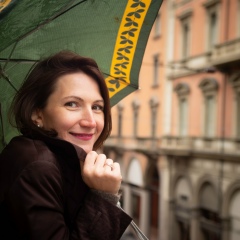Видела в ленте очередной бред о том, что повторное кипячение вредно.
Вот ответ химика:
Водопроводная вода в Питере довольно приличная, по сравнению со многими местами нашей страны. В принципе, пить можно и из-под крана, хотя и не рекомендуется. Конечно, многое зависит от конкретной сети в районе и в доме - бывает течет сплошная ржавчина, а на окраинах бывает и грунтовая вода попадает через дыры в трубах. Но такие случаи все же редкость - следят и Водоканал и санэпидстанции.
Разумеется, водопроводная вода содержит много разных элементов (в том числе и тяжелые металлы, и хлор в разных формах), и сложных органических и неорганических веществ. Воду, химически чистую, не содержащую примесей, очень трудно получить. Но это и не нужно. Животные и человек миллионы лет пили (и пьют) воду из природных источников - рек, озер, луж, со всем тем, что в них содержится.
Конечно, современный городской человек - не то, что первобытный пещерный житель, нет ни луженного желудка, ни нормального иммунитета. Поэтому введены нормативы содержания различных веществ в водопроводной воде - предельно допустимые концентрации - ПДК по каждому веществу. Считается (при современном уровне развития науки и медицины), что если концентрация чего-либо меньше ПДК, то вреда не будет, сколько ни пей. Но даже если ПДК превышена, то вред наносится пропорционально превышению, а не так, что сразу коньки откинешь.
Что касается обработки... Когда кипятят некий объем воды, часть воды испаряется, соответственно, элементы и вещества, не улетевшие с паром, остаются в меньшем объеме воды, и их концентрация несколько увеличивается. И что? Если объем уменьшился из-за кипячения (в электрочайнике он уменьшается за раз на 0,5-1 %), соответственно концентрация некоего вещества тоже повысится на этот 1%. Если концентрация вещества была на уровне ПДК, то теперь она превысит ПДК на 1 %. В плане нанесения вреда это практически незаметно. Тем более, повторю, у нас все концентрации, обычно, много меньше ПДК.
Переход в более ядовитые формы вещества при кипячении у нас практически не происходит - не те вещества.
Хлор. Хлор у нас может вводиться специально, для дезинфекции воды (против бактерий). Соответственно, его вводят, по крайней мере, сейчас, в наиболее безопасной форме. А вообще-то, стараются не использовать. При кипячении часть хлора (большая) переходит в газообразную форму и улетает с паром. То есть кипятить - полезно, в плане избавления от хлора. За дозирокой следят, если при кипячении появляется запах хлора - это признак передозировки на станции водоподготовки, можно жаловаться.
Оставшийся хлор в принципе может вступить в какие-то реакции с осташейся в воде органикой. Но его уже так мало, что концентрация будет много меньше ПДК.
В общем, кипятить многократно - можно (по крайней мере, в Питере).
У меня дома чайник вообще постоянно на малом огне.
Правда, в современном мире есть тенденция чистить воду все сильнее и сильнее, чище и чище. Ну, собственно, вреда-то от этого нет. Опять же, на просторах нашей родины попадается такая вода, что в ней мыться страшно, не то что пить.
Бутилированная вода - МОДА!!!
Все наши фирмы проверить практически невозможно, и многие разливают воду из под того же крана, что, в принципе, не худший вариант.
Что касается "живой и полезной" воды, а также "мертвой и вредной", то это просто бред. Научная терминология совсем другая.
Существует еще масса соображений.
Например, о воде с повышенным содержанием кальция - она, похоже, полезна аллергикам (ключи в Гатчине).
Вода с большим содержанием железа, марганца и кое-чего еще, как у нас в колодце на даче в Чаще. Не то что кипятить, ее невозможно в тепле оставить - выпадают хлопья в большом количестве и цвет становится красным. Пить ее, конечно, не стоит.
Вот ответ химика:
Водопроводная вода в Питере довольно приличная, по сравнению со многими местами нашей страны. В принципе, пить можно и из-под крана, хотя и не рекомендуется. Конечно, многое зависит от конкретной сети в районе и в доме - бывает течет сплошная ржавчина, а на окраинах бывает и грунтовая вода попадает через дыры в трубах. Но такие случаи все же редкость - следят и Водоканал и санэпидстанции.
Разумеется, водопроводная вода содержит много разных элементов (в том числе и тяжелые металлы, и хлор в разных формах), и сложных органических и неорганических веществ. Воду, химически чистую, не содержащую примесей, очень трудно получить. Но это и не нужно. Животные и человек миллионы лет пили (и пьют) воду из природных источников - рек, озер, луж, со всем тем, что в них содержится.
Конечно, современный городской человек - не то, что первобытный пещерный житель, нет ни луженного желудка, ни нормального иммунитета. Поэтому введены нормативы содержания различных веществ в водопроводной воде - предельно допустимые концентрации - ПДК по каждому веществу. Считается (при современном уровне развития науки и медицины), что если концентрация чего-либо меньше ПДК, то вреда не будет, сколько ни пей. Но даже если ПДК превышена, то вред наносится пропорционально превышению, а не так, что сразу коньки откинешь.
Что касается обработки... Когда кипятят некий объем воды, часть воды испаряется, соответственно, элементы и вещества, не улетевшие с паром, остаются в меньшем объеме воды, и их концентрация несколько увеличивается. И что? Если объем уменьшился из-за кипячения (в электрочайнике он уменьшается за раз на 0,5-1 %), соответственно концентрация некоего вещества тоже повысится на этот 1%. Если концентрация вещества была на уровне ПДК, то теперь она превысит ПДК на 1 %. В плане нанесения вреда это практически незаметно. Тем более, повторю, у нас все концентрации, обычно, много меньше ПДК.
Переход в более ядовитые формы вещества при кипячении у нас практически не происходит - не те вещества.
Хлор. Хлор у нас может вводиться специально, для дезинфекции воды (против бактерий). Соответственно, его вводят, по крайней мере, сейчас, в наиболее безопасной форме. А вообще-то, стараются не использовать. При кипячении часть хлора (большая) переходит в газообразную форму и улетает с паром. То есть кипятить - полезно, в плане избавления от хлора. За дозирокой следят, если при кипячении появляется запах хлора - это признак передозировки на станции водоподготовки, можно жаловаться.
Оставшийся хлор в принципе может вступить в какие-то реакции с осташейся в воде органикой. Но его уже так мало, что концентрация будет много меньше ПДК.
В общем, кипятить многократно - можно (по крайней мере, в Питере).
У меня дома чайник вообще постоянно на малом огне.
Правда, в современном мире есть тенденция чистить воду все сильнее и сильнее, чище и чище. Ну, собственно, вреда-то от этого нет. Опять же, на просторах нашей родины попадается такая вода, что в ней мыться страшно, не то что пить.
Бутилированная вода - МОДА!!!
Все наши фирмы проверить практически невозможно, и многие разливают воду из под того же крана, что, в принципе, не худший вариант.
Что касается "живой и полезной" воды, а также "мертвой и вредной", то это просто бред. Научная терминология совсем другая.
Существует еще масса соображений.
Например, о воде с повышенным содержанием кальция - она, похоже, полезна аллергикам (ключи в Гатчине).
Вода с большим содержанием железа, марганца и кое-чего еще, как у нас в колодце на даче в Чаще. Не то что кипятить, ее невозможно в тепле оставить - выпадают хлопья в большом количестве и цвет становится красным. Пить ее, конечно, не стоит.
I saw in the tape another nonsense that re-boiling is harmful.
Here is the chemist's answer:
Tap water in St. Petersburg is pretty decent, compared to many places in our country. In principle, you can drink from the tap, although it is not recommended. Of course, a lot depends on the particular network in the area and in the house - there is continuous rust flowing, and on the outskirts there is also groundwater falling through holes in the pipes. But such cases are still rare - they are monitored by Vodokanal and sanitary and epidemiological stations.
Of course, tap water contains many different elements (including heavy metals, and chlorine in various forms), and complex organic and inorganic substances. Water that is chemically pure and free of impurities is very difficult to obtain. But this is not necessary. For millions of years, animals and humans have been drinking (and are drinking) water from natural sources - rivers, lakes, puddles, with all that they contain.
Of course, a modern urban man is not that a primitive cave dweller, there is neither a tinned stomach, nor normal immunity. Therefore, standards have been introduced for the content of various substances in tap water - maximum permissible concentrations - MPC for each substance. It is believed (at the current level of development of science and medicine) that if the concentration of something is less than the MPC, then there will be no harm, no matter how much you drink. But even if the MPC is exceeded, then the damage is done in proportion to the excess, and not so that you immediately discard the skates.
As for the treatment ... When a certain volume of water is boiled, part of the water evaporates, respectively, elements and substances that have not escaped with steam remain in a smaller volume of water, and their concentration increases slightly. So what? If the volume has decreased due to boiling (in an electric kettle it decreases at a time by 0.5-1%), respectively, the concentration of a certain substance will also increase by this 1%. If the concentration of the substance was at the MPC level, now it will exceed the MPC by 1%. In terms of harming it is almost imperceptible. Moreover, I repeat, we have all the concentrations, usually much less than the MPC.
The transition to more toxic forms of matter during boiling practically does not take place with us - the wrong substances.
Chlorine. Chlorine can be introduced with us specifically for the disinfection of water (against bacteria). Accordingly, it is administered, at least now, in the most secure form. But actually, they try not to use it. When boiling part of the chlorine (large) passes into a gaseous form and flies away with steam. That is, boiling is useful in terms of getting rid of chlorine. Dosage is monitored if, when boiling, the smell of chlorine appears - this is a sign of an overdose at a water treatment station, you can complain.
The remaining chlorine, in principle, can enter into some kind of reaction with the organics remaining in the water. But it is already so small that the concentration will be much lower than the MPC.
In general, boil repeatedly - you can (at least in St. Petersburg).
At my place, the kettle is generally constantly on low heat.
True, in the modern world there is a tendency to clean the water stronger and stronger, cleaner and cleaner. Well, actually, there is no harm from this. Again, in the vastness of our homeland, there is such water that it is scary to wash in it, not like drinking.
Bottled water - FASHION !!!
It is almost impossible to check all our firms, and many pour water from under the same tap, which, in principle, is not the worst option.
As for the "living and healthy" water, as well as the "dead and harmful", then this is just nonsense. Scientific terminology is completely different.
There are many more considerations.
For example, about water with a high content of calcium - it seems to be useful for allergy sufferers (keys in Gatchina).
Water with a high content of iron, manganese and something else, like in our well at the dacha in Most. Not only boil, it is impossible to leave it warm - flakes fall in large quantities and the color turns red. Drinking it, of course, is not worth it.
Here is the chemist's answer:
Tap water in St. Petersburg is pretty decent, compared to many places in our country. In principle, you can drink from the tap, although it is not recommended. Of course, a lot depends on the particular network in the area and in the house - there is continuous rust flowing, and on the outskirts there is also groundwater falling through holes in the pipes. But such cases are still rare - they are monitored by Vodokanal and sanitary and epidemiological stations.
Of course, tap water contains many different elements (including heavy metals, and chlorine in various forms), and complex organic and inorganic substances. Water that is chemically pure and free of impurities is very difficult to obtain. But this is not necessary. For millions of years, animals and humans have been drinking (and are drinking) water from natural sources - rivers, lakes, puddles, with all that they contain.
Of course, a modern urban man is not that a primitive cave dweller, there is neither a tinned stomach, nor normal immunity. Therefore, standards have been introduced for the content of various substances in tap water - maximum permissible concentrations - MPC for each substance. It is believed (at the current level of development of science and medicine) that if the concentration of something is less than the MPC, then there will be no harm, no matter how much you drink. But even if the MPC is exceeded, then the damage is done in proportion to the excess, and not so that you immediately discard the skates.
As for the treatment ... When a certain volume of water is boiled, part of the water evaporates, respectively, elements and substances that have not escaped with steam remain in a smaller volume of water, and their concentration increases slightly. So what? If the volume has decreased due to boiling (in an electric kettle it decreases at a time by 0.5-1%), respectively, the concentration of a certain substance will also increase by this 1%. If the concentration of the substance was at the MPC level, now it will exceed the MPC by 1%. In terms of harming it is almost imperceptible. Moreover, I repeat, we have all the concentrations, usually much less than the MPC.
The transition to more toxic forms of matter during boiling practically does not take place with us - the wrong substances.
Chlorine. Chlorine can be introduced with us specifically for the disinfection of water (against bacteria). Accordingly, it is administered, at least now, in the most secure form. But actually, they try not to use it. When boiling part of the chlorine (large) passes into a gaseous form and flies away with steam. That is, boiling is useful in terms of getting rid of chlorine. Dosage is monitored if, when boiling, the smell of chlorine appears - this is a sign of an overdose at a water treatment station, you can complain.
The remaining chlorine, in principle, can enter into some kind of reaction with the organics remaining in the water. But it is already so small that the concentration will be much lower than the MPC.
In general, boil repeatedly - you can (at least in St. Petersburg).
At my place, the kettle is generally constantly on low heat.
True, in the modern world there is a tendency to clean the water stronger and stronger, cleaner and cleaner. Well, actually, there is no harm from this. Again, in the vastness of our homeland, there is such water that it is scary to wash in it, not like drinking.
Bottled water - FASHION !!!
It is almost impossible to check all our firms, and many pour water from under the same tap, which, in principle, is not the worst option.
As for the "living and healthy" water, as well as the "dead and harmful", then this is just nonsense. Scientific terminology is completely different.
There are many more considerations.
For example, about water with a high content of calcium - it seems to be useful for allergy sufferers (keys in Gatchina).
Water with a high content of iron, manganese and something else, like in our well at the dacha in Most. Not only boil, it is impossible to leave it warm - flakes fall in large quantities and the color turns red. Drinking it, of course, is not worth it.
У записи 7 лайков,
0 репостов.
0 репостов.
Эту запись оставил(а) на своей стене Майя Покотилова



























